Cleaning an unused metal hot tub that has been sitting requires extra care and attention to remove accumulated debris, rust, and mineral deposits. Over time, an unused hot tub can become a breeding ground for dirt and bacteria, leading to potential health hazards and diminished functionality. This comprehensive guide is designed to help you restore both the cleanliness and appearance of your metal hot tub, ensuring a safe and enjoyable soaking experience.
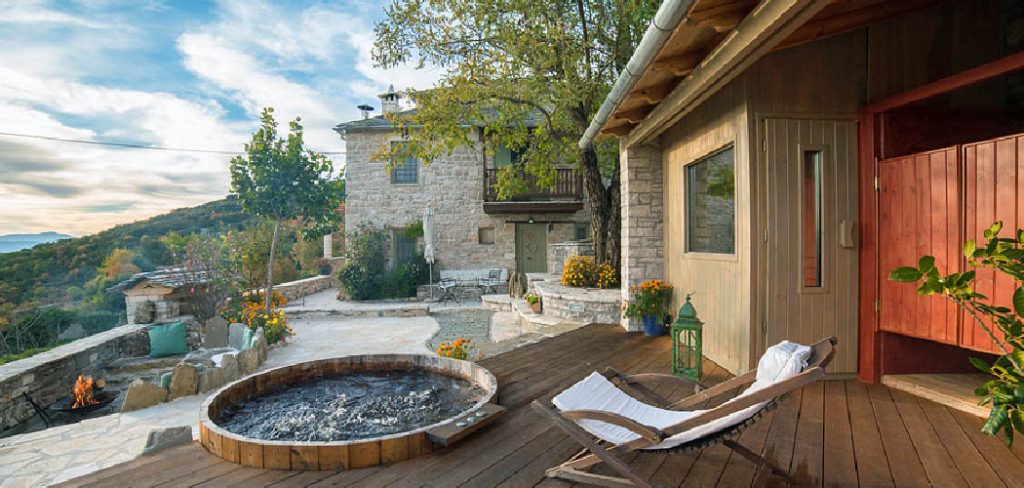
By following the step-by-step instructions and utilizing the recommended cleaning techniques and solutions, you can effectively eliminate dirt, stains, and rust, bringing your hot tub back to its former glory. Proper cleaning is essential to maximize its lifespan and maintain optimal performance, whether you’re preparing your hot tub for regular use or getting it ready for sale.
Throughout this article, we will provide you with valuable insights and practical tips on inspecting the condition of your hot tub, gathering the necessary supplies, and executing the cleaning process. With our guidance, you can restore your metal hot tub to its pristine state and enjoy the soothing benefits of a clean and rejuvenating soak. Let’s dive in and discover how to clean a metal hot tub that has been sitting!
Assessing the Condition of the Hot Tub
Before cleaning, it’s crucial to assess the condition of your metal hot tub. By carefully inspecting various aspects, you can identify any existing issues and determine the necessary steps for restoration.
Inspecting for Dirt, Debris, and Rust
Begin by thoroughly examining the hot tub’s interior and exterior surfaces for accumulated dirt, debris, and signs of rust. Take the following steps to assess the condition:
- Check for Standing Water: Look for any remaining water in the tub. Stagnant water can harbor bacteria and contribute to corrosion.
- Evaluate Organic Matter: Inspect for leaves, twigs, or other organic matter that may have accumulated in the tub. These can cause clogging and promote bacterial growth.
- Look for Rust and Stains: Examine the metal surface for any signs of rust or persistent stains that may require special treatment.
Checking for Structural Issues
In addition to surface conditions, it’s essential to inspect the hot tub for any structural issues that might compromise its functionality and safety. Pay attention to the following:
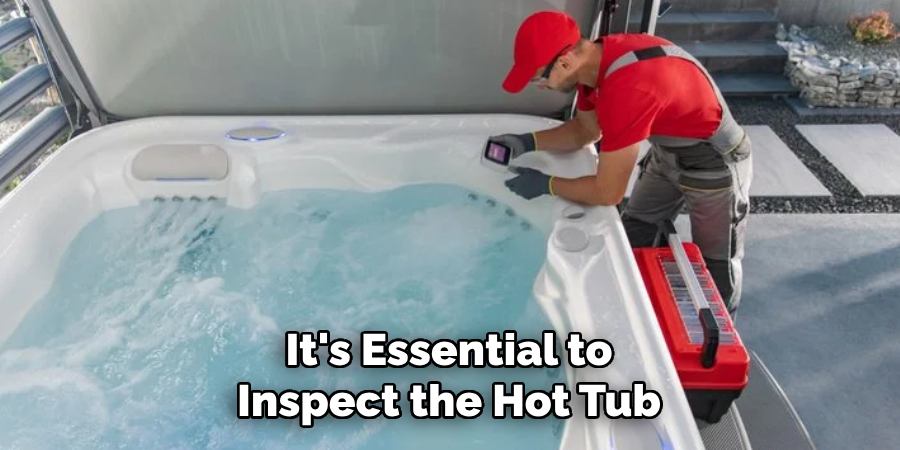
- Look for Leaks: Carefully inspect the plumbing connections, valves, and hoses for any signs of leaks that might result in water loss or damage to the surrounding area.
- Check for Corrosion or Damage: Examine the metal shell and plumbing components for any visible corrosion, such as pitting or discoloration. Also, look for any signs of physical damage, such as dents or cracks, which may indicate structural weaknesses.
Addressing any structural issues before proceeding with the cleaning process is crucial for ensuring your metal hot tub’s longevity and optimal performance. By attending to these concerns, you create a solid foundation for the subsequent cleaning steps, allowing you to restore your hot tub to its pristine state and enjoy a revitalizing and worry-free soaking experience.
Gathering Necessary Supplies
Before you begin the cleaning process, gathering all the necessary supplies is essential to ensure an effective and thorough cleaning. Here are the key items you’ll need:
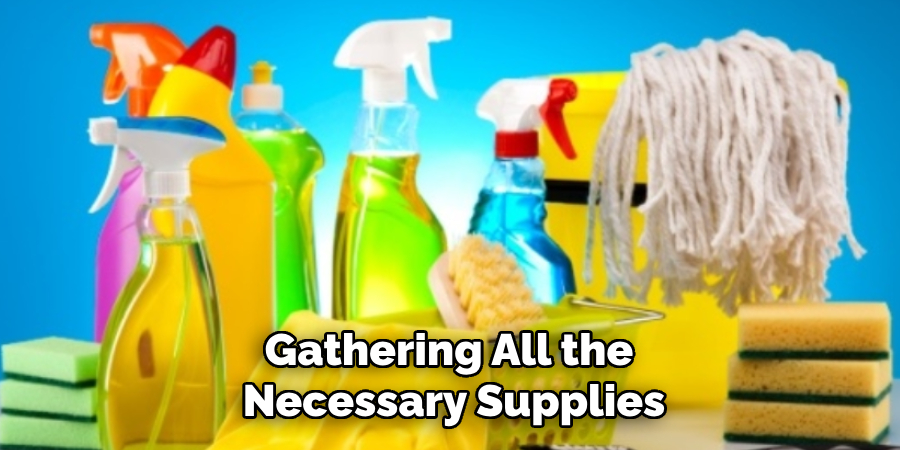
Cleaning Tools
The right cleaning tools are crucial for efficiently removing dirt, grime, and stains from your metal hot tub. Consider the following tools:
- Scrub brushes: Choose brushes with bristles that are appropriate for the surface of your metal tub.
- Sponges: Opt for non-abrasive sponges to avoid scratching the metal surface.
- Microfiber cloths: These lint-free cloths are ideal for wiping and polishing the tub.
- Buckets: You’ll need buckets to mix cleaning solutions and carry water.
Cleaning Solutions
Selecting the appropriate cleaning solutions is essential for effectively tackling various types of stains and buildup. Consider using the following recommended cleaners:
- Vinegar: A versatile and natural cleaner that helps remove mineral deposits and stains.
- Baking soda: Effective for scrubbing and eliminating odors.
- Dish soap: Works well for general cleaning and removing grease.
- Rust removers: Use rust removers specifically designed for metal surfaces to address any rust stains.
Safety Gear
It’s important to use the appropriate safety gear to protect yourself during the cleaning process. Consider the following:
- Gloves: Wear gloves to protect your hands from cleaning solutions and potential irritants.
- Safety goggles: Protect your eyes from splashes or any chemical fumes.
- Proper ventilation: Ensure you have proper ventilation in the area where you’ll be using chemical cleaners to prevent inhalation of fumes.
By gathering these essential supplies, you’ll be well-prepared to clean your metal hot tub effectively and safely.
Draining and Removing Debris
Properly draining and clearing out debris from your metal hot tub is an essential step in the cleaning process to ensure optimal functionality and cleanliness. Here’s how you can effectively drain the stagnant water and remove debris:
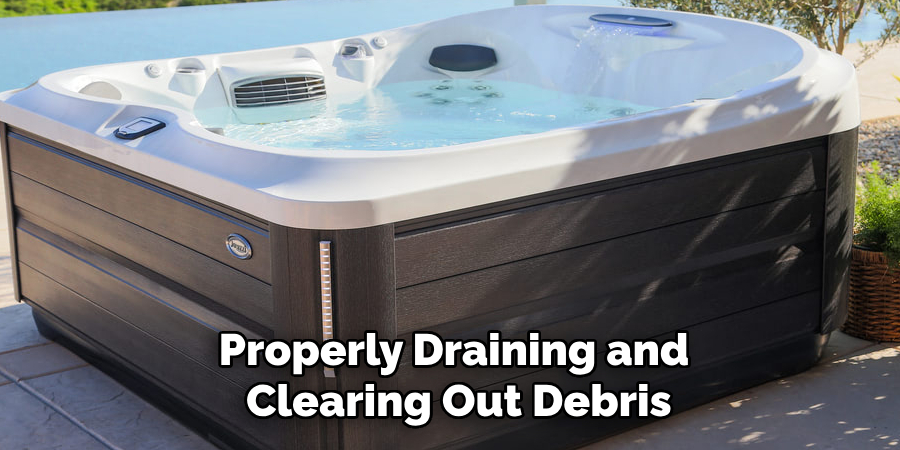
Draining Stagnant Water
To begin, it’s crucial to safely remove all the water from your hot tub to prevent any waterborne contaminants from lingering. Follow these steps for draining the stagnant water:
- Using a Pump or Buckets: If your hot tub has a built-in drain or a pump system, utilize it to drain the water directly. Otherwise, you can manually remove the water using buckets or a submersible pump.
- Importance of Responsible Disposal: Once the water is drained, it’s important to dispose of it responsibly. Avoid draining the water into storm drains, as it can contaminate natural water sources. Instead, consider using it to water plants or grass, as long as no chemicals or cleaning agents have been used.
Clearing Out Debris
After draining the water, it’s time to clear out any debris that may have accumulated in your hot tub. Follow these steps to remove leaves, dirt, and sludge from the tub and plumbing system:
- Cleaning the Surface: Use a net or skimmer to remove large debris from the water’s surface, such as leaves or twigs. Dispose of the collected debris properly.
- Unclogging Filters and Drains: Check the hot tub’s filters and drains for any blockages caused by dirt or sludge. Remove the filters and clean them according to the manufacturer’s instructions. Consider using a pipe snake or a specialized drain cleaner to clear the blockage for stubborn clogs.
By properly draining and removing debris from your metal hot tub, you ensure a clean and well-maintained tub that is ready for the next step in the cleaning process.
How to Clean a Metal Hot Tub that Has Been Sitting: Cleaning the Metal Surface
Regularly cleaning the metal surface is essential to ensure your metal hot tub stays in pristine condition. This helps remove rust, stains, and grime and restores its shine. Follow these steps for a thorough cleaning:
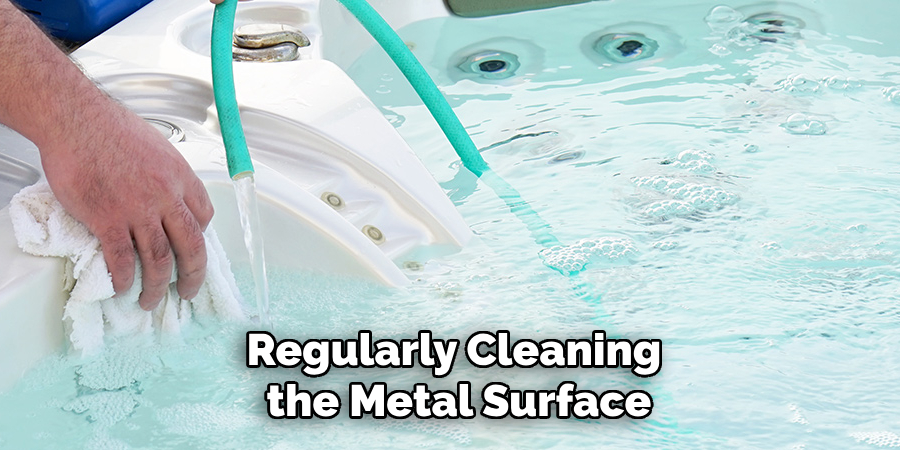
Removing Rust and Stains
You can use vinegar or a commercial rust remover to treat rust spots on your metal hot tub. Here’s what you need to do:
- Apply vinegar or the rust remover directly to the affected areas.
- Allow it to sit for a few minutes to penetrate the rust.
- Gently scrub the rusted spots using non-abrasive tools like a soft cloth or sponge.
- Rinse the area thoroughly with water and wipe dry.
For stubborn stains, repeat the process until the stains are completely removed.
Deep Cleaning with Baking Soda Paste
To tackle grime and mineral deposits, you can create a baking soda paste and follow these steps:
- Mix baking soda and water to create a thick paste.
- Apply the paste to the metal surface, focusing on areas with stubborn grime or mineral deposits.
- Gently scrub the surface using a soft cloth or sponge.
- Rinse the area thoroughly with water to remove any residue.
Ensure to rinse the metal surface completely to avoid leaving any baking soda residue behind.
Polishing the Metal
You can use a metal polish or a vinegar solution to restore the shine of your metal hot tub. Here’s how:
- Apply a small amount of metal polish or a mixture of vinegar and water to a microfiber cloth.
- Gently buff the metal surface using circular motions.
- Continue buffing until you achieve a clean and polished finish.
Follow the manufacturer’s instructions when using metal polish or creating a vinegar solution for best results.
By following these cleaning techniques, you can keep your metal hot tub looking pristine and ensure its longevity. Regular cleaning and maintenance are key to enjoying a sparkling and inviting hot tub experience.
Flushing the Plumbing System
Proper hot tub maintenance requires regular plumbing system flushing to remove any buildup or residue that may accumulate over time. Flushing the plumbing system helps to ensure optimal performance and water quality. Here’s how you can effectively flush your hot tub’s plumbing system:
Running Cleaning Solutions Through Jets
A cleaning mixture should be circulated through the system to remove buildup from the jets. A common cleaning solution is a mixture of vinegar and water. Follow these steps:
- Start by filling a bucket with a cleaning solution of vinegar and water in equal parts.
- Turn on the jets and slowly pour the cleaning solution into the tub.
- Allow the jets to run for about 15-20 minutes to thoroughly circulate the cleaning mixture.
- Repeat the process if necessary until the water is clear and free of debris or buildup.
Inspecting and Cleaning Filters
Regularly inspecting, cleaning, or replacing hot tub filters is essential for optimal performance and water clarity. Here’s how you can clean the filters effectively:
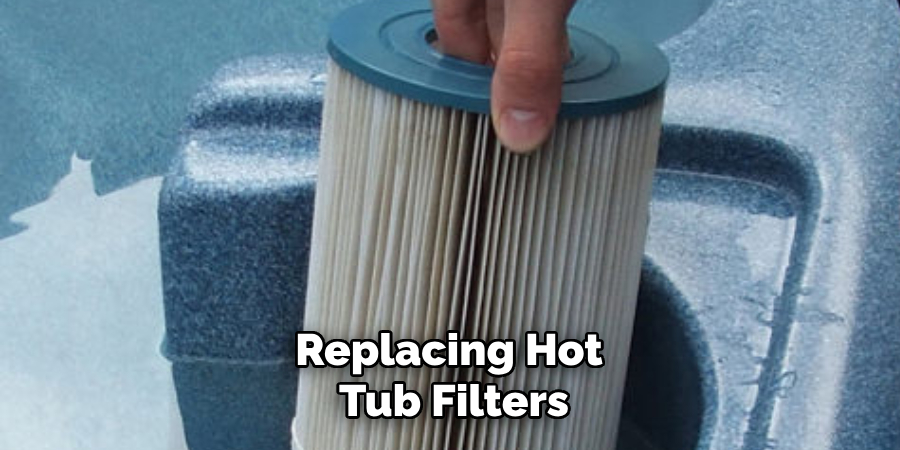
- Turn off the hot tub and locate the filter compartment.
- Remove the filters according to the manufacturer’s instructions.
- Inspect the filters for any debris or signs of damage. If damaged, consider replacing them.
- To clean the filters, rinse them with water to remove loose debris.
- For more thorough cleaning, soak the filters in a cleaning solution specifically formulated for hot tub filters. Follow the instructions on the cleaning solution for the recommended soaking time.
- Rinse the filters again to remove any remaining cleaning solution.
- Allow the filters to dry completely before reinstalling them.
By following these steps and incorporating regular maintenance into your hot tub care routine, you can ensure the longevity of your tub and enjoy clean and refreshing soaks for years to come.
Preventing Future Buildup and Damage
To prolong the life of your hot tub and maintain its optimal performance, it’s essential to implement preventive measures and incorporate regular maintenance into your routine. Here are some tips to prevent future buildup and damage:
- Importance of Periodic Cleaning: Apart from regular filter cleaning, periodically clean the entire hot tub, including the shell, jets, and plumbing lines. This helps remove any potential buildup of dirt, oils, or impurities that can affect water quality and tub performance.
- Water Circulation: Proper water circulation is crucial for maintaining balanced chemical levels and preventing the growth of algae and bacteria. Ensure that your hot tub’s circulation pump is functioning correctly and run it for a sufficient period daily.
- Monitoring Chemical Levels: Regularly test and maintain appropriate chemical levels in your hot tub. Properly balanced pH, sanitizer levels, and alkalinity help prevent water issues, such as cloudy water or bacterial growth.
- Covering the Hot Tub: Whenever the hot tub is not in use, cover it securely to prevent debris, leaves, and other contaminants from entering the water. This also helps retain heat and reduce energy consumption.
Regular Maintenance Tips
To keep your hot tub in top shape, follow these maintenance tips:
- Schedule Routine Inspections: Regularly inspect the hot tub equipment, such as pumps, heaters, and control panels, to identify any signs of wear or damage. Promptly address any issues to prevent further damage or malfunction.
- Drain and Refill: As the manufacturer recommends, periodically drain and refill the hot tub to refresh the water and remove accumulated chemicals and impurities.
- Protecting Metal Surfaces: To prevent rust and corrosion, apply a protective coating or treatment to metal surfaces, such as stainless steel jets and fittings.
- Keeping the Tub Dry: Ensure the hot tub is completely dry when not in use. Wipe down the shell, cover, and any exposed surfaces to prevent moisture buildup and potential damage.
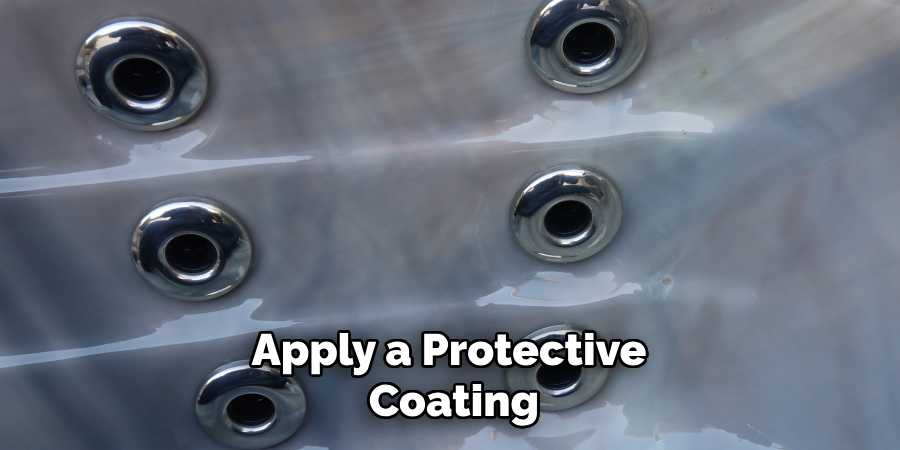
By following these preventive measures and incorporating regular maintenance into your hot tub care routine, you can extend the lifespan of your tub, optimize performance, and enjoy clean and refreshing soaks for years to come.
Conclusion
In conclusion, knowing how to clean a metal hot tub that has been sitting is essential for maintaining its longevity and ensuring a clean and enjoyable soaking experience. By following these step-by-step cleaning tips, including draining and refilling the tub, protecting metal surfaces, and keeping it dry when not in use, you can effectively remove impurities, prevent rust and corrosion, and extend the life of your hot tub. Regular maintenance and preventive measures are key to maximizing the usability and performance of your tub. So, embrace the benefits of a clean and restored hot tub by incorporating these maintenance practices into your routine. Enjoy the rejuvenating experience and relaxation that a well-maintained hot tub brings!
Edmund Sumlin is a skilled author for Metal Fixes, bringing 6 years of expertise in crafting a wide range of metal fixtures. With a strong background in metalwork, Edmund’s knowledge spans various types of fixtures, from decorative pieces to functional hardware, blending precision with creativity. His passion for metalworking and design has made him a trusted resource in the industry.
Professional Focus:
- Expert in Metal Fixtures : Edmund aesthetic specializes in creating durable and innovative metal fixtures, offering both appeal and functionality. His work reflects a deep understanding of metalworking techniques and materials.
- Sustainability Advocate : He is dedicated to using sustainable practices, ensuring that every fixture is crafted with eco-friendly methods while maintaining high-quality standards.
In his writing for Metal Fixes, Edmund provides valuable insights into the latest trends, techniques, and practical advice for those passionate about metal fixtures, whether they are professionals or DIY enthusiasts. His focus on combining artistry with engineering helps others discover the true potential of metal in design.


